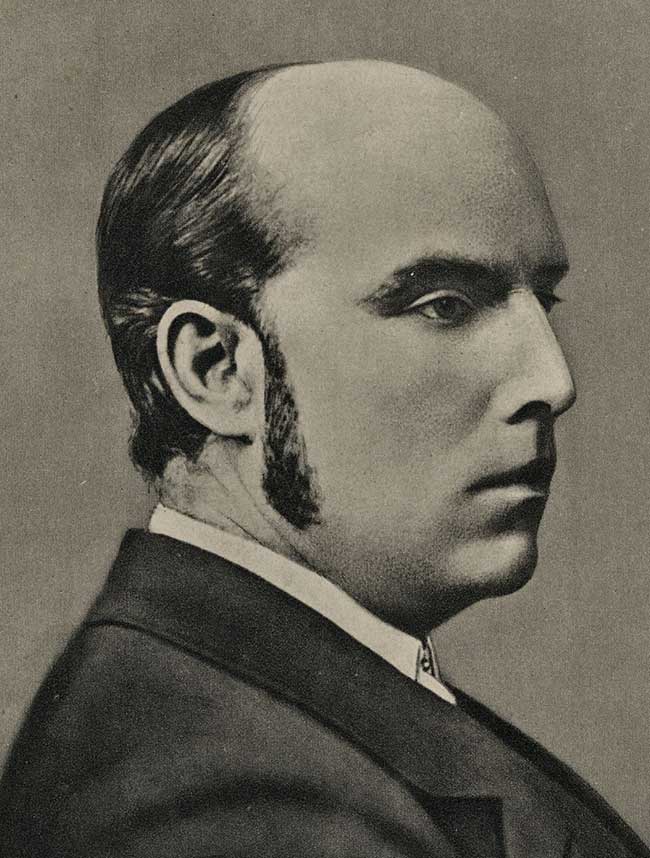EX-CON LARS OLSEN SKREFSRUD MADE GOOD IN INDIA

[Above:The Municipal Archives of Trondheim - Flickr: Lars Olsen Skrefsrud (1840 - 1910) CC BY 2.0]
EX-CONS KNOW the pain of the polite dismissal. Lars Olsen Skrefsrud served close to three years in prison for theft. There he felt the good influence of his friend Anna Olsum and of Hans Hauge’s Norwegian revival movement and converted to Christ. Making good use of his time, he learned English and German. But in 1861, after his release, when he pleaded for an opportunity to serve as a missionary to bring God’s life-changing word to other people, he met a stone wall. Norwegian Missionary Society leaders did not want an ex-con representing them.
Certain that God was leading him into mission work, Skrefsrud turned his eyes toward Germany. Johannes Gossner had evangelized much of Europe with Baptist ideas and founded the Gossner Mission Society to carry on evangelistic work in other nations. Mission authorities believed Skrefsrud’s conversion was genuine and accepted him for training.
While studying in Berlin, Skrefsrud met Hans Peter Børresen, a Dane who also burned with desire to spread the gospel. The two became inseparable friends. They reached India together in 1863. Anna Olsum also sailed to India where she married Skrefsrud.
Skrefsrud quickly mastered the Santal language. He spoke it so well that Santal people came from long distances to hear him. Eventually he developed a system for writing their language and published its first grammar, followed by a translation of the Bible. He also produced a hymnal using native tunes. He went on to write textbooks, collect and publish traditional Santal myths, and found schools that taught useful skills such as farming, animal care, and carpentry.
Unlike many missionaries who sought to impose Western customs on their converts and create missionary-run organizations, Skrefsrud aimed to establish a church the Santalese would control.
It is the heathenism that we want to get rid of, not the national character. We will distinguish between Christianity and European forms of civilization; the first we will give them in their own vessels, and the second we will leave in Europe.
When the Gossner Mission sought to separate Skrefsrud and Børresen because of European rivalries, the pair would have none of it. They applied to a Danish mission. When they could not win acceptance with it, they struck out on their own. Eventually they were able to convince Lutherans from around the world to support them. In the transition between missions, the pair preempted land that the Gossner Mission was a signatory to, and pretended to potential donors that they had never adopted Baptist adult immersion over Lutheran infant sprinkling. Despite their difficulties obtaining backing and these two ethical lapses, the pair had unusual success.
In part this was because the Santal had traditions similar to the Bible’s creation and flood stories. Although they worshiped demons, they believed in a being they called the “genuine God.” According to Santal tradition, they lost their connection with the genuine God during their migration to India. Defeated again and again trying to find their way through seemingly impassable mountains, they abandoned his worship to seek the favor of the gods of the mountains and soon found a pass that allowed them to move forward. Eager for knowledge of the genuine God, whose fellowship they had lost, thousands of Santal became Christians under the preaching of Børresen and Skrefsrud.
Børresen died in 1901. Skrefsrud continued to labor until his own death on this day, 11 December 1910. By then, there were over fifteen thousand Santal Christians, a number that has grown tenfold in the intervening century.
—Dan Graves
----- ----- -----
For more about faith in India, read Christian History #87, India: A Faith of Many Colors






